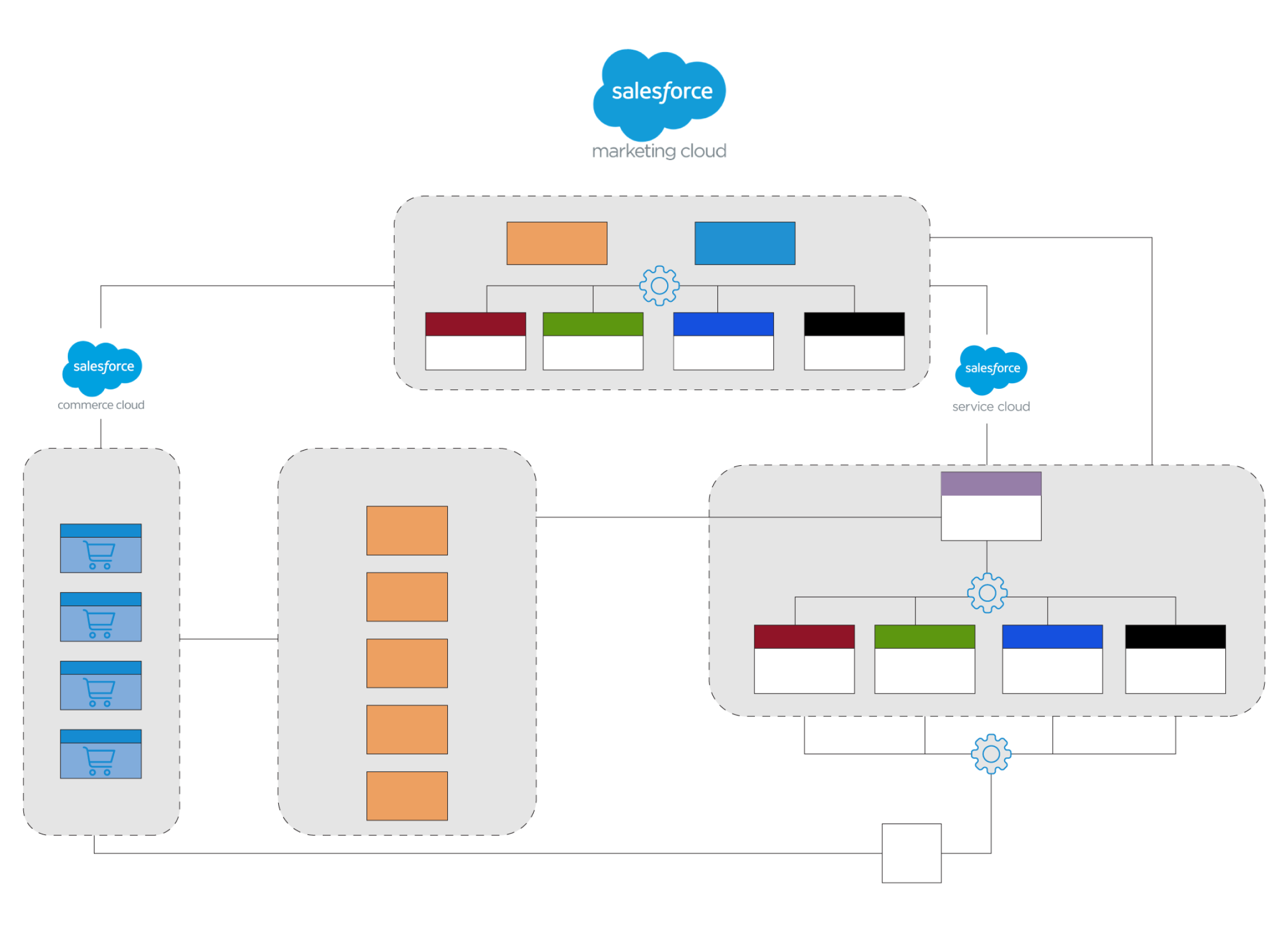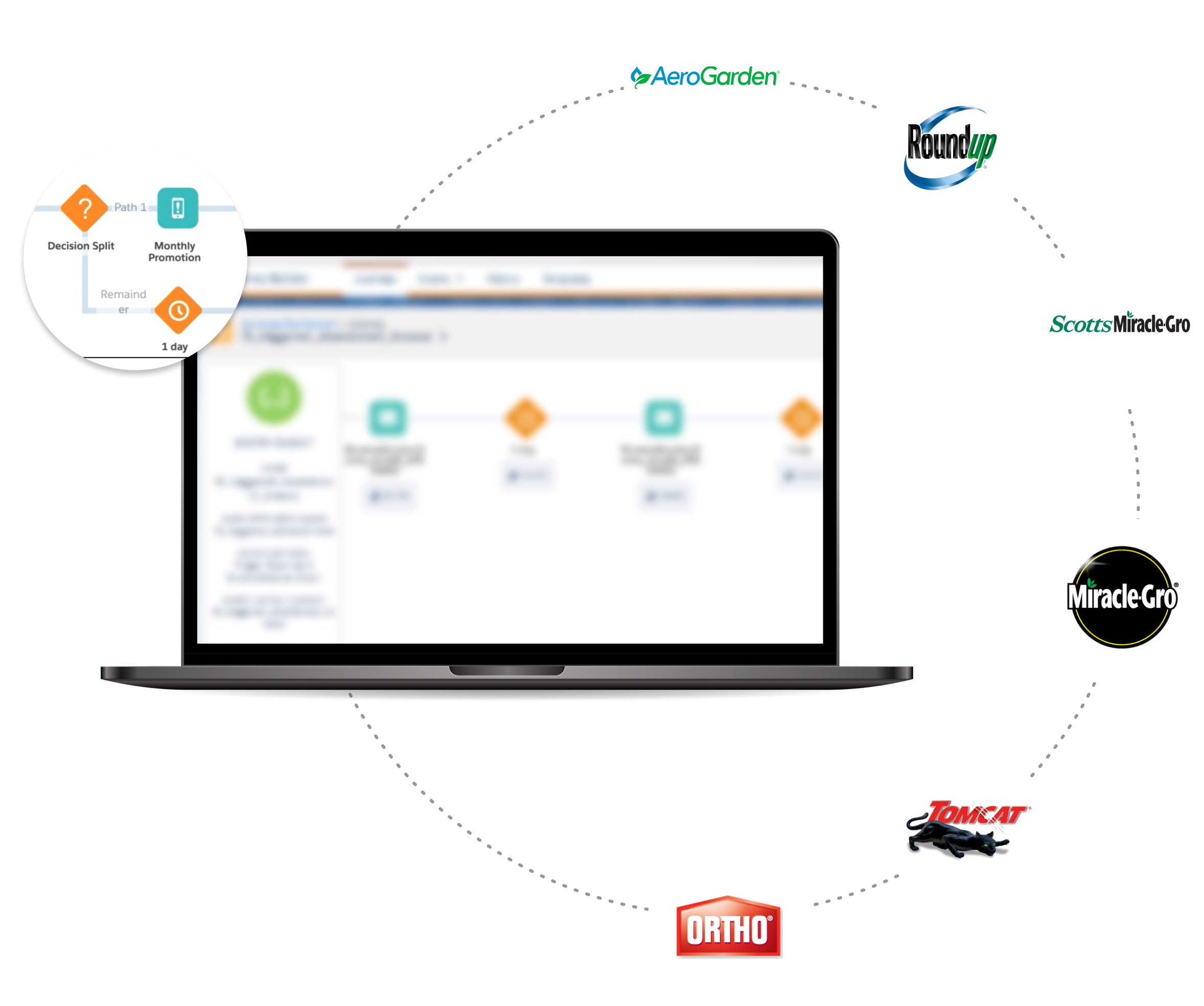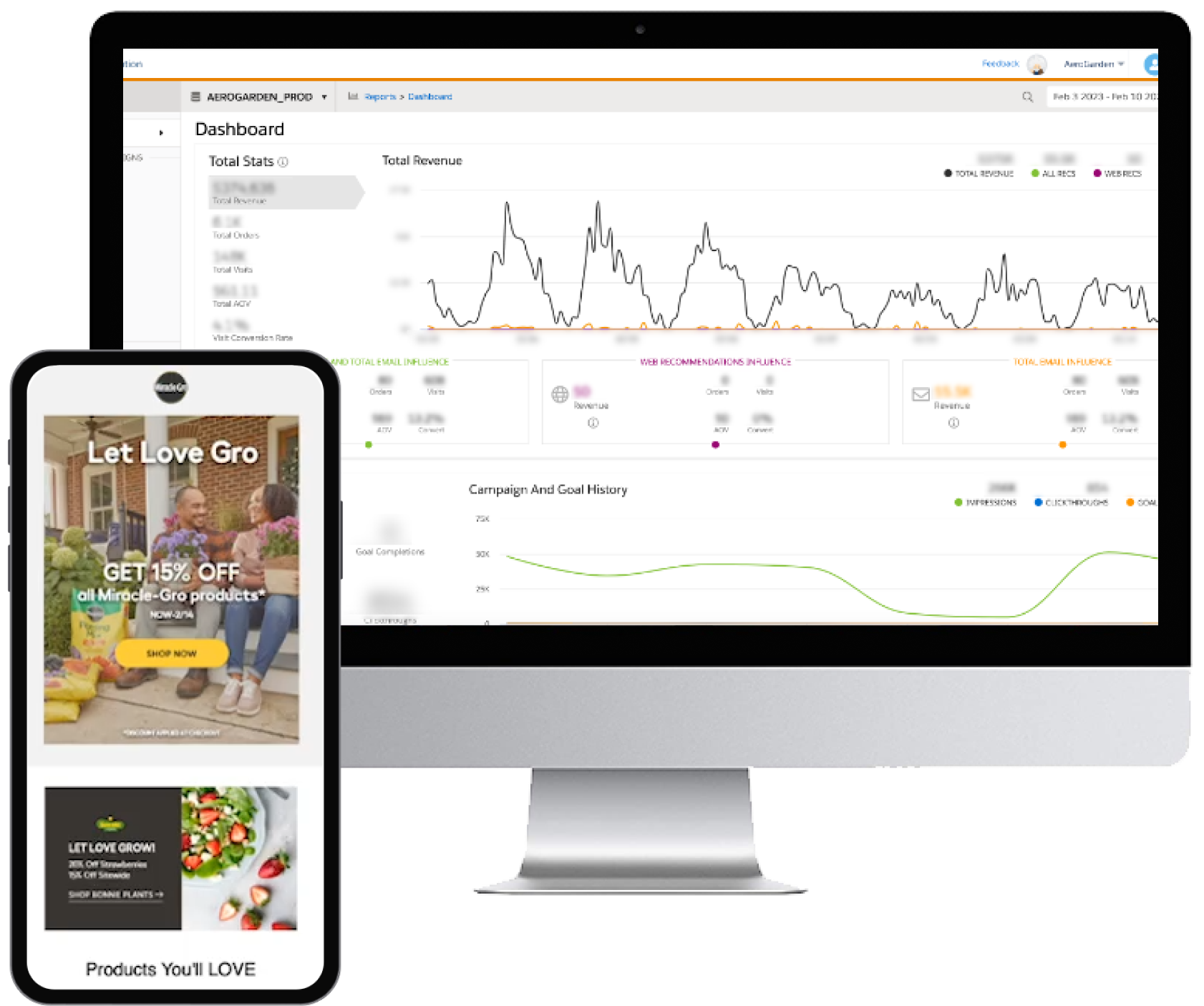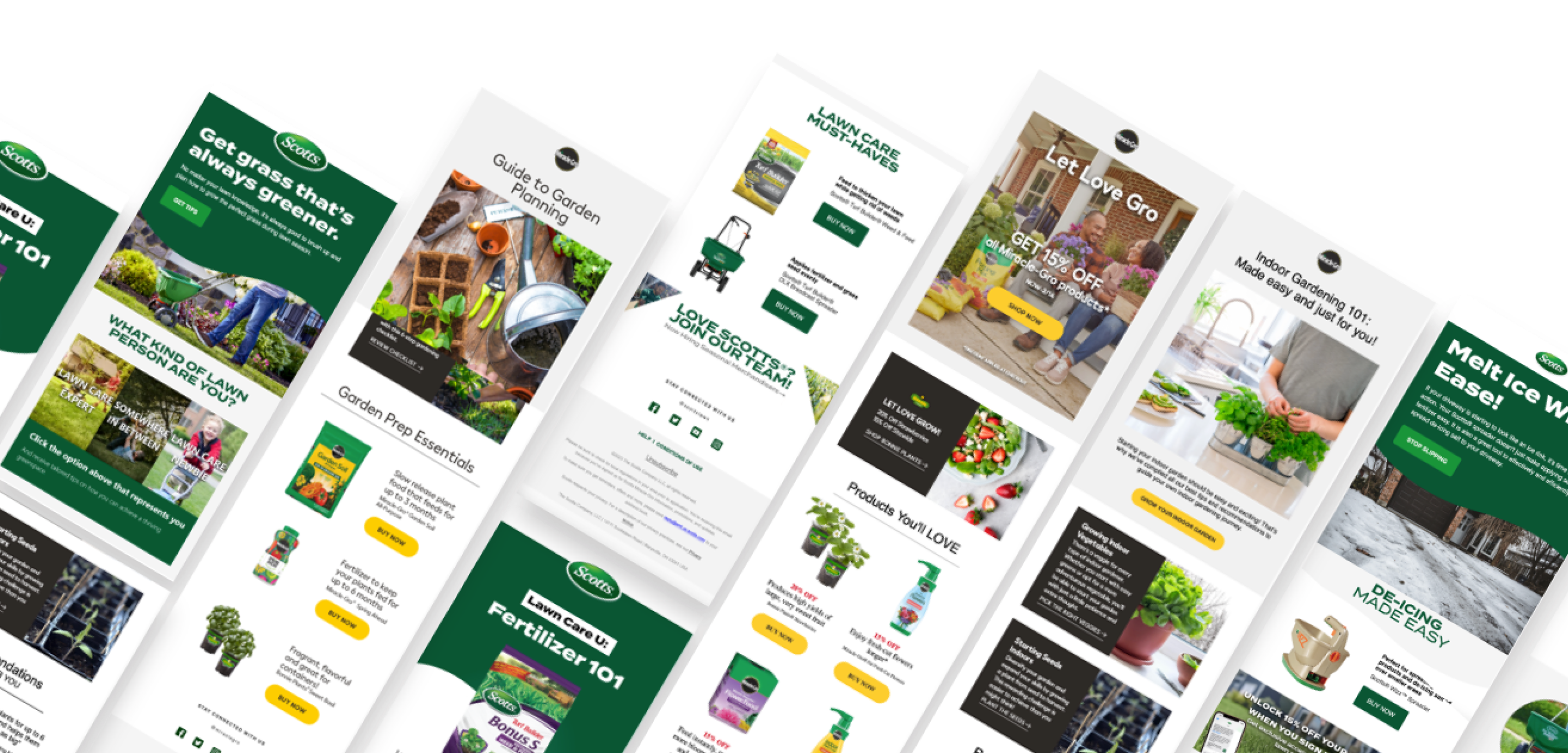

The Situation
Servicing both commercial and residential areas, ScottsMiracle-Gro is North America’s leader in lawn, garden and hydroponics — but sustained growth doesn’t come without challenges. As the company focused on expanding its portfolio of brands, teams across the enterprise began to struggle with efficiencies, data collection and strategy alignment.
After the move to Salesforce Service Cloud helped ease some of these pain points, Scotts soon committed to a wider adoption of the Salesforce platform. However, it was clear that the simultaneous implementation of Commerce and Marketing Clouds would be no small task — so Scotts partnered with Bold Orange.
WHAT WE DID
Working closely with Scotts’ internal team, we helped facilitate the company’s enterprise-level digital transformation, streamlining marketing automation efforts, eliminating data silos and driving seamless integration across their tech stack.
In total, we successfully migrated nine of Scotts’ brands onto Salesforce Marketing Cloud — all before the start of the busy summer season.
01
Designing the Architecture
The first phase of the implementation focused on developing a multi-brand enterprise architecture. How should data flow between Service, Commerce and Marketing Clouds? How will Scotts be able to maintain a single-customer view while also allowing each brand to maintain separate permissions and preferences? These were some of the questions that needed answers. Additionally, Scotts would be using a single-org connector between Service and Marketing Clouds, which meant having a strong emphasis on data sharing was especially important.
CROSS-CLOUD ARCHITECTURE

02
Delivering an Enterprise Solution
We began with a proof of concept, bringing our solution to life for one brand within the Scotts portfolio. This approach allowed us to efficiently validate architectural design decisions, refine data migration processes, build the necessary integrations with other systems and create repeatable assets — and ultimately accelerate the migration of the remaining brands.
In all, we built a stable data model that empowers a 360-degree customer view at the enterprise level, created a custom preference center, warmed 6 IP addresses and set up Transactional Sends with multi-language (English and French) communications and popups.

03
Enhancing the Experience with Personalization
To drive further relevancy, we implemented Marketing Cloud Personalization to support prioritized use cases around subscriber acquisition and personalized content.

EMAIL AND SMS OPT-IN
Our first use case: creating a pop-up form to acquire both email and mobile opt-in. This rules-based form appears at a very specific time during the web experience based on known vs. unknown visitors. The mobile opt-in form was created via custom integration with Attentive, enabling cross-platform subscriber syncing.
ABANDONED CART CAMPAIGNS
Next, we integrated the web and email experience with Marketing Cloud Personalization to trigger Abandon Browse and Abandon Cart campaigns, both of which displayed real-time product recommendations based on web behavior.

PRODUCT RECOMMENDATIONS
Lastly, we took it a step further by creating a repeatable content block that would enable Scotts’ marketing team to include real-time product recommendations in ad hoc email campaigns. Once created, this content block could be leveraged in any email to serve up product recommendations based on recent web behavior to ensure a personalized, integrated experience across web and email channels.

IMPACT
Our team migrated nine brands onto Salesforce Marketing Cloud from various vendors in less than a year — a true feat of efficiency.
We helped Scotts bring together marketing and technology teams to work collaboratively throughout the implementation—creating a Customer Experience Center of Excellence.
We created all new data models, templates, preference management, historical order data, dynamic product information and more.
We identified additional ways the Scotts team could leverage Marketing Cloud Personalization through interstitial pop-ups and subscriber acquisition forms, which allowed our client to further consolidate their vendors and go “all in” on Salesforce.


